JamesWebbSpaceTelescope
Latest
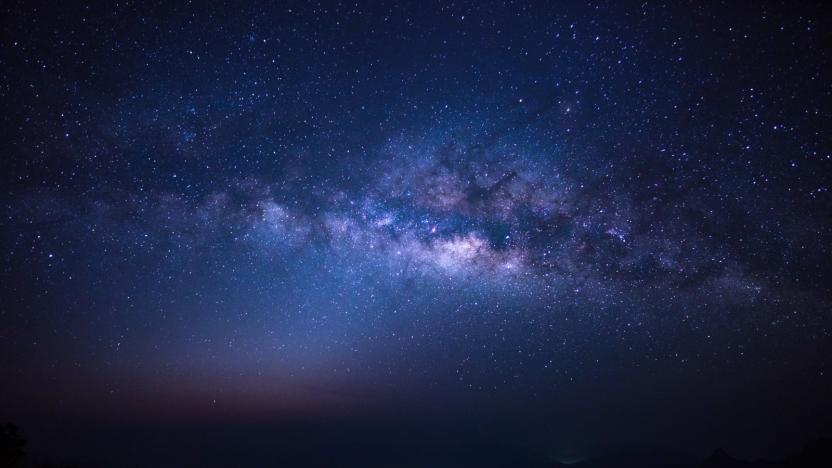
Researchers propose guiding large space telescopes with tiny satellites
Using the recently retired Kepler space telescope, scientists have confirmed thousands of exoplanets, and as its successor TESS ramps up its search, we're poised to discover plenty more. But once we find exoplanets, learning more detailed information about them requires larger, more powerful space telescopes. These telescopes would need very large mirrors, much like NASA's upcoming (and continuously delayed) James Webb Telescope, which will use its 6.5-meter-wide mirror to observe extremely distant galaxies. And like the James Webb Telescope, they very well could have a mirror made up of many individual segments -- Webb's has 18.
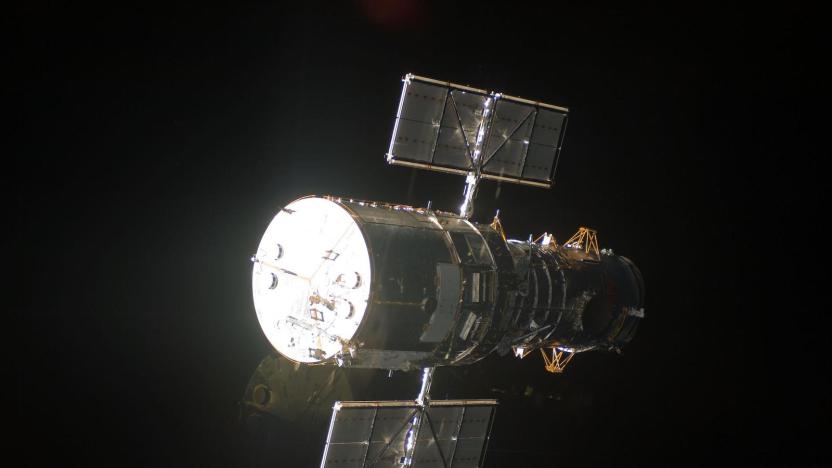
Hubble Space Telescope is in trouble after gyroscope failure
The Hubble Space Telescope has advanced our understanding of the universe immeasurably since it was first deployed to low Earth orbit in 1990. It's impossible to overemphasize just how valuable it has been to scientists. But now, the space-based observatory is in trouble. The NASA Hubble Twitter account announced that on Friday, the Hubble Space Telescope went into safe mode after a gyroscope, used to point and stabilize the observatory, failed.
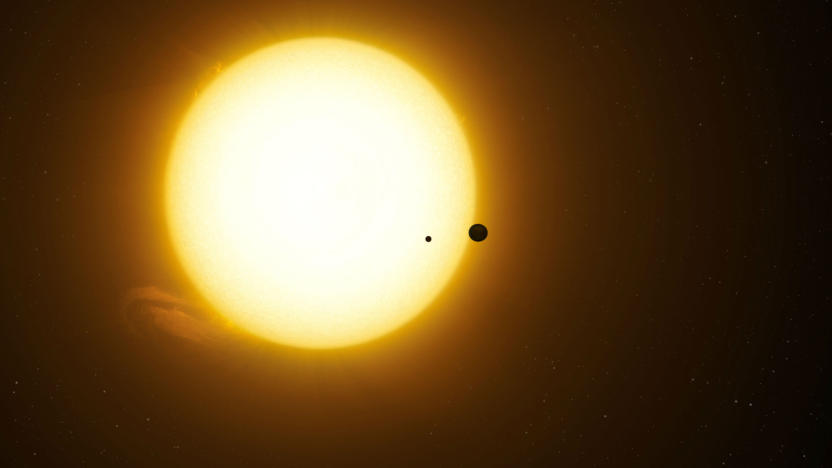
Researchers may have found the first signs of an exomoon
Over the last couple of decades, we've spotted thousands of planets outside of our solar system -- Kepler alone has confirmed more than 2,600. But so far, we've haven't found any exomoons, despite the likelihood of them being prevalent in our galaxy. Because moons tend to be much smaller than their planet counterparts, they're harder to spot, which is probably why we have yet to find any. However, researchers at Columbia University have now found evidence of what might be an exomoon located thousands of light-years from Earth.
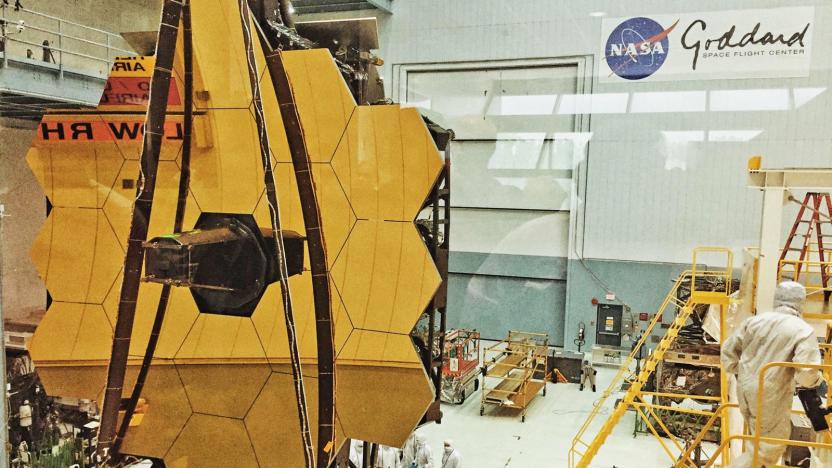
NASA delays James Webb Space Telescope launch until 2021
Today, NASA's independent review board announced that it has unanimously recommended that development on the James Webb Space Telescope should move forward. As a result, NASA has a new official launch date for the space observatory: March 30, 2021.
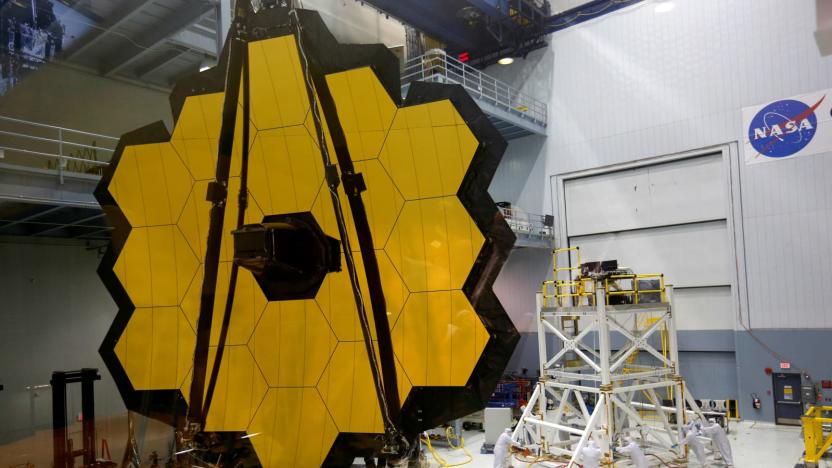
The James Webb Space Telescope will be delayed for at least a year
Today, NASA held a press conference on the status of the James Webb Space Telescope, the organization's successor to Hubble, and the news was grim. The observatory was supposed to launch between March and June of 2019. JWST will miss that window; while a specific launch time frame hasn't been established, NASA is currently targeting May 2020.

NASA’s Hubble successor may miss its launch window
The James Webb Space Telescope, NASA's successor to Hubble, has undergone its share of delays. Now, things are getting even tighter. A report from the US Government Accountability Office finds that because of ongoing technical issues with the telescope, "additional launch delays are likely." What's more, the project is "at risk of breaching its $8 billion cost cap for formulation and development set by Congress in 2011."

NASA pushes James Webb Space Telescope launch to Spring 2019
If you're counting down the days until NASA's Hubble replacement takes off, you'll have to count a bit longer. The James Webb Space Telescope was due to launch around a year from now. But, there seems to be (another) holdup. The aeronautics agency is blaming the delay on the remaining integration of spacecraft parts taking "longer than expected." As a result, the launch date is now being pushed to Spring 2019, specifically between March and June of that year. NASA assures that the rescheduled lift off is not due to any "hardware or technical performance concerns."

The search for a habitable second Earth
Contact with extraterrestrial life would be an epochal event. Even the discovery of a simple alien organism would be transformative, giving us unprecedented insight into how life forms on Earth and other planets. Yet, there's exactly zero proof that life exists beyond this world -- not one alien germ, spore or cell, let alone an advanced race that could save or enslave us. And we don't even know how life sprung up here 4 billion years ago from rocks, mud and water.
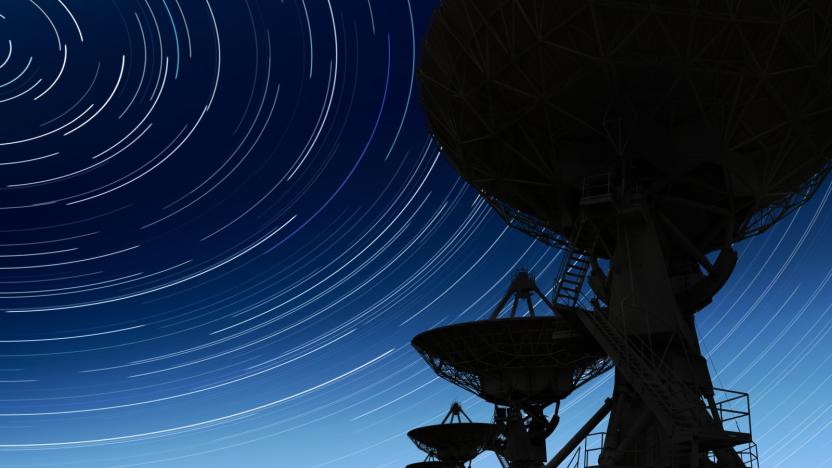
Listening to starlight: Our ongoing search for alien intelligence
Six hours a day, seven days a week, for four straight months. That's how long radio astronomer Frank D. Drake pointed the 26-meter telescope at the National Radio Astronomy Observatory (NRAO) research facility in Green Bank, West Virginia, toward the heavens, looking for signs of intelligent life beyond Earth. He dubbed his efforts Project Ozma, in honor of the Queen of Oz from L. Frank Baum's famed children's book series.

Lights out on a ghostly James Webb Space Telescope inspection
The James Webb Space Telescope (JWST) might be the most important scientific instrument ever developed. It'll peer back in time over 13 billion years to the early universe and look for signs of life around the recently discovered TRAPPIST-1 planetary system.

NASA will resume testing its Hubble successor this month
One of NASA's biggest victories last year was the $8.7 billion James Webb Space Telescope's completion. And now the aeronautics agency is set to resume vibration testing for the instrument. These tests aim to replicate the conditions it will encounter before lift-off to "ensure that functionality is not impaired by severe launch and landing environments," according to NASA.
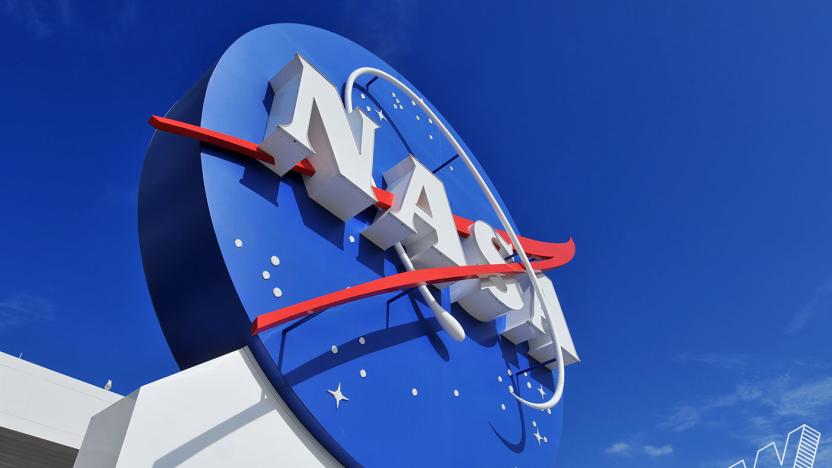
NASA dominated space and social media in 2016
"We all have a thirst for wonder," American astronomer Carl Sagan wrote in his sci-fi novel Contact. "It's a deeply human quality." And it's partly thanks to this "thirst" that NASA had the space game on lock this year, even though it doesn't have access to as much money as it used to. The agency stepped into 2016 armed with $19.3 billion in government funding. Yes, that's almost a $1 billion more than what the administration originally asked for, but it's also significantly lower than NASA's budget in previous years, when adjusted for inflation.
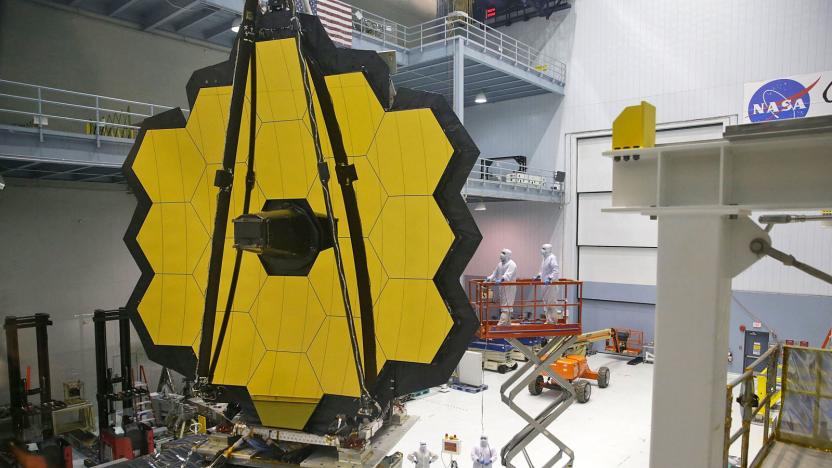
NASA has completed the $8.7 billion James Webb space telescope
The Hubble Space Telescope has given humanity unprecedented glimpses into the universe, but it will soon be replaced by a far more powerful model. NASA administrator Charles Bolden unveiled the completed $8.8 billion James Webb Space Telescope (JWST), which will be able to see the universe as it was 13 billion years ago. It's equipped with a 21-foot, gold-coated mirror array that can collect seven times more light than Hubble and scan the infrared spectrum to see through dust. "We've done two decades of innovation and hard work, and this is the result," project scientist John Mather says.

NASA observes possible water geysers on Europa
Hubble's extended mission continues to pay off: NASA announced today that a team of astronomers using the space telescope have spotted what appear to be plumes of high-altitude water vapor spewing from the icy surface of Jupiter's moon Europa. Researchers have long believed that Europa holds a global ocean beneath a thick, potentially miles-deep, layer of ice, but the new observation indicated it could be possible to sample the ocean without landing or drilling on the moon itself.
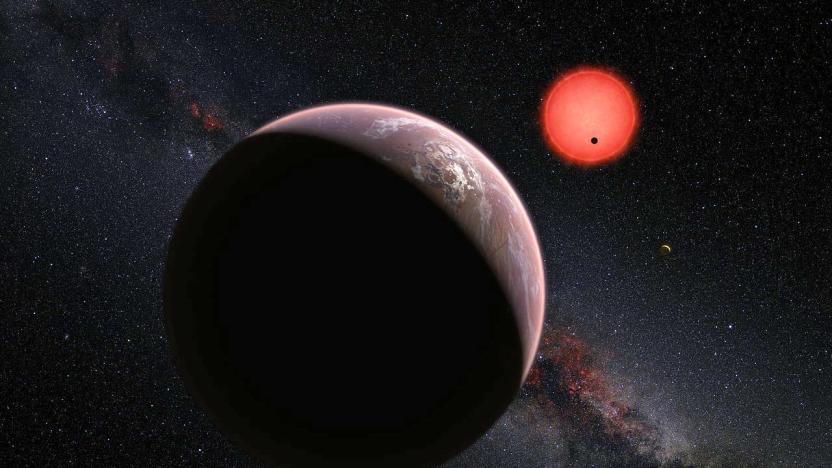
Three Earth-sized planets exist in the Aquarius constellation
It's the dawning of the age of Aquarius. Well, the discovery of three planets orbiting a cooler-than-the-Sun dwarf star located in the Aquarius constellation, according to NASA. A number of telescopes, including the TRAPPIST at the La Silla Observatory in Chile were used in this trio, and the star itself bears the name TRAPPIST-1 for pretty obvious reasons. The planets are Earth-like in size and two of them orbit the star roughly every 1.5 and 2.4 days. The third one has proven a bit harder to track, with NASA saying its orbit is anywhere between 4.5 to 73 days.

NASA installs the first mirror on the Hubble's replacement
NASA announced on Wednesday that it had successfully installed the first of 18 mirrors on the new James Webb space telescope. The work took place at NASA's Goddard Space Flight Center in Greenbelt, Maryland earlier this week.
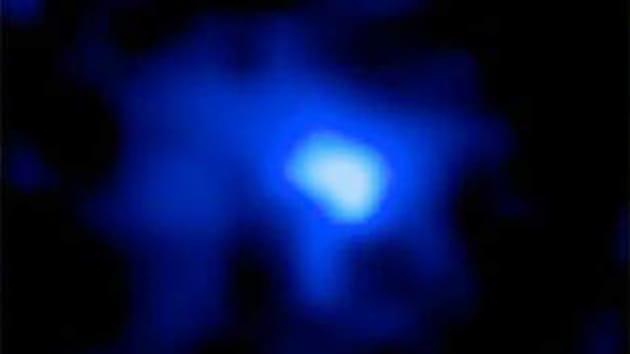
Researchers find new 'most distant' galaxy in the universe
Peering through the voids of space is a lot like time travelling: the deeper we gaze into a seemingly endless Universe, the further back in time we can see. Now, a team of researchers led by astronomers from Yale University and UC Santa Cruz have announced that they've discovered the most distant galaxy to date. In fact, the galaxy, known a EGS-zs8-1, is so ludicrously far from Earth that light just now reaching us from it is about 13 billion years old. To put that in perspective, the Universe itself is 13.8 billion years. That means this galaxy began forming stars when the Universe was only 5 percent of its current age -- barely 670 million years after big banging into existence.

James Webb Space Telescope ready for its wings, on track for 2018 launch
What's a spacecraft need wings for? Packaging, of course. The James Webb Space telescope relies on a 21 foot diameter backplane mirror to steady it, but the assembly needs to fit inside of a 16.5 foot fairing to ride the rocket to the stars. A tight fit, to say the least. Fortunately, NASA technicians have just finished the mirror backplate support structure, a folding wing assembly designed with to safely collapse the beryllium mirror during flight, and expand it again in orbit. "This is another milestone that helps move Webb closer to its launch date in 2018," remarked Geoff Yoder, the program's director. Now that the wing assembly is finished, the team can focus on the support fixture for the instrument model, which will complete major construction and allow technicians to connect the finished pieces. We'll miss old Hubble, sure, but we're happy to see its successor pulling things together all the same.

Alt-week 8.25.12: robotic noses, Nodosaurs and Space X launches again
Alt-week peels back the covers on some of the more curious sci-tech stories from the last seven days. All good things come to an end, they say. Thankfully, most bad things do, too. So while the rest of the world of tech is dealing with the fallout, and possible implications of patent law, over here in the wild party that is Alt, we're fist pumping at all the awesome weekly sci-tech fodder. For example, we've got a robo-nose that can sniff out nasties in the air, a 110-million-year-old footprint found in NASA's back yard, and not one, but two space stories to reflect on. There's a hidden joke in there too, come back once you've read through to find it. This is alt-week.

NASA to launch Hubble space telescope successor in 2018, will clean its room later
You know you're going to miss the Hubble Space Telescope once ceases operation and they let it simply burn up in orbit. But don't cry, dry your eye, the National Aeronautics and Space Administration has announced plans to put its successor, the James Webb Space Telescope, in orbit in 2018. The telescope, which will be 100 times more sensitive than the Hubble, faced being cut completely by a Congressional subcommittee earlier this year as a result of budget constraints given its $8.8 billion price tag. After much Capital Hill grilling over the project being billions over budget, NASA has moved is scheduled launch -- initially set for 2013 -- to October of 2018. Although not the best news, it'll still get up there and you can hug your Hubble plushie tightly tonight knowing distant worlds will be that much closer.









